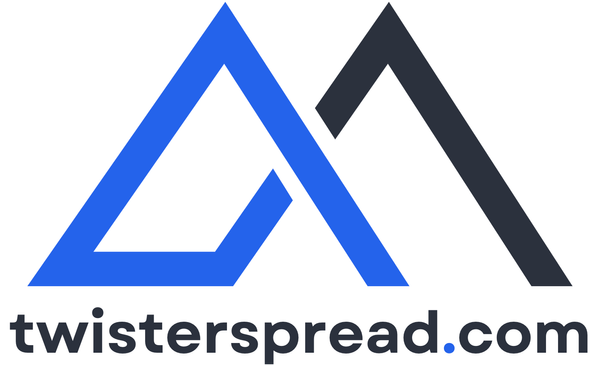A year full of twists and turns
This final article of the year allows us to undertake a quick retrospective of what happened in this somewhat crazy year, 2024.

Hey there, Nicolas here! This year, 2024, has been a year of renewal for us, filled with attempts, failures, and successes. We've constantly reinvented ourselves to keep moving forward, progressing, and pushing our limits.
Let's take a look at what we've achieved, what we've missed, and a quick overview of our finances and our outlook for the coming year.

Napse: Automating investment
The year 2024 started with Napse, a project that began two years earlier. It was an innovative and ambitious project aimed at automating investment and portfolio management. This project allowed us to develop all our computer science and programming skills (if you want to know more, we wrote a Grezy archive on the subject), but like any project where you're learning, we made plenty of mistakes.
We aimed too high and too perfect: the codebase became very difficult to evolve. We got bogged down in features while the essential elements weren't always there.
Crane-it: Automating deployment
With Napse, we encountered numerous difficulties in automating our deployments on AWS. So, we decided to create a platform to easily deploy Docker Compose. This was an element we hadn't found in any other tool. Thus, Crane-it was born.
The strategy was simple: develop the tool as quickly as possible. This way, we could quickly get clients and cover our costs.
If you have some entrepreneurial or marketing experience, this strategy might make you smile, and rightly so! As I write this, no client is paying to use this platform. There's our second big failure of 2024.
But why not continue to develop the platform to offer more value and attract new users?
Great question. In our rush to develop the tool quickly, we made poor decisions at the start of the project (like creating a DevOps tool entirely in TypeScript...). We also sacrificed clean code for speed. This allowed us to move quickly at first, but over time, the maintainability of the code degraded. This directly impacted our speed, as it became increasingly difficult to fix and evolve the application.
We dedicated an article to this mistake:


So much so that today, we'd probably be better off starting from scratch with our new tech stack and a better strategic vision. In the meantime, Crane-it meets our needs and allows us to deploy our applications easily and quickly. Even if it's not used by others, it's very useful to us!
Grezy Software: The organization of all possibilities
Since we wanted to sell Crane-it as a SaaS, we required a legal structure. That's why we founded Grezy Software. But we didn't build it just any way: we made it a development agency.
The idea is simple: we can put all the projects we want to undertake under this legal structure, opening up a thousand and one possibilities for the future.
Nango: An intelligent template
From the difficulties encountered in developing Crane-it, we decided to learn as much as possible.
The idea behind Nango is to capitalize on all the projects we can undertake (that's the template part) and help us develop new projects (that's the intelligent part).
- A robust tech stack
The first lesson is to solidify our tech stack so it allows us to do as much as possible. The goal is to minimize the chances that our tech stack won't be suitable, while choosing a flexible tech stack to avoid changing it for each project. - A “production ready” template
Having a well-constructed template ready to go into production from the start saves a lot of time when initializing a new project. - Automating part of the development
Being a developer sometimes means doing repetitive tasks. Not necessarily repetitive from a computer's point of view, but from a human's. For this, we automated the generic part of development. This saves us precious hours on each project. If you're curious about how we did it, you can check out this article:

Twister Spread: A revolution in mogul skiing
We launched Twister Spread at the end of 2024, and it's one of our biggest successes of the year.
We managed to shake up the well-established world of mogul skiing by doing something no one had done before: creating a tool capable of analyzing the entire career of each athlete.
Moreover, we analyze the most effective strategies, to determine which jumps are trending each season and the biases of the judges. Yes, this sport is judged by humans, so there are inevitably biases. The rational analysis of human biases is the “WOW” feature of the application. So much so that even people outside this field quickly understand the relevance and power of this feature.
Seeing that we've managed to reach the four corners of the world is a real victory, but there's still a lot to do!

A quick look at our finances
We're not rolling in gold yet, but Grezy's cash flow is doing well. When we created the company in August, we deposited €8,000 in share capital to ensure we had enough funds to carry out our projects.
We completed two projects in 2024:
- A €1,500 project
- A €8,000 project + €1,200/year for support (paid annually)
Additionally, we managed to sell a premium account to a mogul skiing federation for €2,500. Adding it all up, we have €13,200 in revenue.
Unfortunately, we also have expenses.
- IT: ~€250 (servers, domain names, various tools, etc.)
- Lawyers for legal creation: €2,000
In terms of expenses, we're at €2,250, leaving us with a margin of €10,950. Taking into account we started in August, we're really happy with these numbers! Let's hope they keep on increasing!
Outlook for 2025
For the coming year, we have plenty of ideas in mind. We'll share them with you when the time comes.
Our guideline for early 2025 is to continue working on Twister Spread, using all the feedback we receive to improve the tool as much as possible. We also want to explore other sports, such as other freestyle skiing disciplines and alpine skiing. We know our judge analysis works very well, so it could be interesting to explore other sports that use judges for scoring, like figure skating or gymnastics. Furthermore, we also want to develop new projects, specifically focused on sports. This niche is working well for us so far, so we're choosing to go further in this direction.
If you enjoyed this retrospective, feel free to subscribe to follow our entrepreneurial adventures!







